Showing 1–16 of 248 results
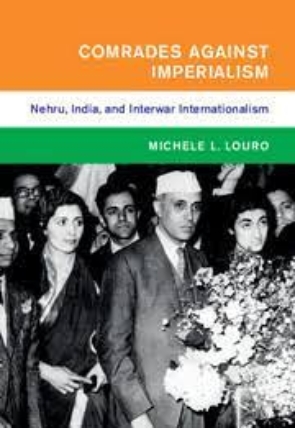
COMRADES AGAINST IMPERIALISM NEHRU, INDIA AND INTERWAR INTERNATIONALISM 2020 EDITION FREE PDF BOOK
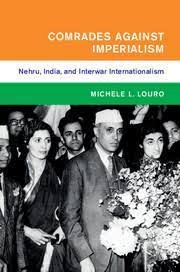
COMRADES AGAINST IMPERIALISM NEHRU, INDIA AND INTERWAR INTERNATIONALISM 2020 EDITION FREE PDF BOOK
DESCRIPTION OF THIS BOOK:-
In this book Michele L. Louro compiles the debates, introduces the personalities, and reveals the ideas that seeded Jawaharlal Nehru’s political vision for India and the wider world. Set between the world wars, this book argues that Nehru’s politics reached beyond India in order to fulfill a greater vision of internationalism that was rooted in his experiences with anti-imperialist and anti-fascist mobilizations in the 1920s and 1930s.
Using archival sources from India, the United States, the United Kingdom, the Netherlands, Germany, and Russia, the author offers a compelling study of Nehru’s internationalism as well as contributes a necessary interwar history of institutions and networks that were confronting imperialist, capitalist, and fascist hegemony in the twentieth-century world.
Louro provides readers with a global intellectual history of anti-imperialism and Nehru’s appropriation of it, while also establishing a history of a typically overlooked period.
Michele Louro provides a revealing portrait of Nehru and of his two political souls. On one hand, there is ‘Nehru the comrade’, cosmopolitan and charismatic member of a militant network extending from Europe to Asia, Africa, and the Americas.
On the other, ‘Nehru the nationalist’ – a role far better known and widely celebrated – freedom fighter and to-be-father of the nation, leader of the Indian National Congress (INC) and at the forefront India’s struggle for decolonization.
Most literature mainly understands Nehru as a nationalist, hence portrays his commitment to internationalism as secondary or instrumental to the achievement of the nationalist objective of independence.
Taking distance from such interpretations, Louro makes room for Nehru’s often neglected avatar of comrade. She argues that Nehru’s faith in anti-imperialism was not ancillary to other goals but authentic, a political ideal adopted in its own right.
The author maintains that in Nehru’s political system there was, in principle, neither hierarchy nor contradiction between internationalist anti-imperialism and nationalist anti-colonialism. For him ‘nationalism was often framed as a “stage” to internationalism’ (p. 12).
Once socialized into the ideals of anti-imperialism and socialism at the Brussels Congress, Nehru envisioned of a world in which the anti-capitalist and the anti-colonial struggles went hand in hand, necessary as they were to each other.
Their respective goals were eventually convergent: to have a world free from exploitation, whether perpetrated to the detriment of working classes or non-European nations. Nehru tried to keep these two ideals together and to juggle his double role of LAI militant and INC member throughout the interwar period.
Comrade-congressman Nehru emerges from Louro’s account as an extremely able politician, a ‘transformist’ at times. In India, he strives to ‘internationalize Indian nationalism’ (p. 183). He pushes the Congress to join hands with the LAI contending that anti-imperialists support India’s cause for independence. He attempts to introduce socialism into the INC program, managing at the same time a difficult relationship with more moderate Gandhian congressmen (Ch. 3).
On the other hand, in Europe he advocates for LAI’s support to India’s nationalist cause positioning ‘India at the forefront of the world struggle against imperialism’ (p. 39). Later on, once the war threat becomes reality and the world spirals into World War II, he maintains that ‘peace can come only when India is free’ (p. 233).
Overall Louro delineates Nehru as a comrade sincerely committed to internationalist ideals, even when these eventually come into conflict with the priority objective of Indian independence (pp. 241, 254). The contradictions of Nehru’s ‘anti-imperialism with Indian characteristics’, emerge as fascism materializes in Europe (Ch. 6). The historical events of the period make it difficult for Nehru to juggle his two avatars as he used to. At the same time, they produce an ideological extremization that poisons the inclusive partnerships on which the LAI had been funded – the ‘blend’ of anti-imperialism, anti-colonialism, and socialism Nehru had advocated for – eventually bringing the organization to its end (Ch. 7).
Louro suggests that Nehru’s commitment to internationalism remained incorrupt throughout these events and that he always acted in good faith. Rather than pure idealism, a more cynical diagnosis would read in these contradictions evidence of pragmatism, realism, perhaps even hypocrisy at times. Similarly, some deficiencies of Nehru’s internationalism, such as the Indo-centrism of his world view (pp. 55-7, 242, 254) or his approximated understanding of communist China – merely based on the interactions with the Kuomintang (pp. 242, 247, 254, 280) – could invite stronger criticism.
In any case, the book deserves commendation for providing a more nuanced and sophisticated picture of the politician Nehru, his political vision and his understanding of the world. Also, it shows in detail how these were influenced not only by Indian events, but by what was happening in the rest of the globe as well. Another important contribution of the book is that it sheds light on a historical period on which relatively less little literature is available. Louro’s arguments are based on a careful reconstruction of Nehru’s correspondences and travels. Moreover, her conclusions often expand or challenge mainstream notions.
She demonstrates, for example, that Nehru’s commitment to socialism begun not during his education in England (1905-1912), but at the Brussels Congress (1927) and through his consequent militancy within the LAI (Ch. 1, 2). Against historical accounts which argue that anti-imperialism pushed Nehru to ‘abandon authentically indigenous ideas about India’, Louro maintains that ‘Nehru’s anti-colonial and anti-imperial projects were not mutually exclusive and cannot be understood without examining the national and the international dimension together’ (p. 104).
To support this thesis, Louro considers the INC–LAI breakup of 1930 and its aftermath. Such crisis is widely seen as the end of LAI’s constraining over Nehru, which lets him finally free to embrace his nationalist mission fully. In fact, the author demonstrates that after the breakup Nehru’s anti-imperialist militancy did not stop but continued, and that he kept cultivating crucial relationships with former comrades (pp.182-3).
Another compelling part of the book is Louro’s take on Nehru’s socialism, a widely debated element of his political thought. She argues that his ’”vague and confused” sympathies or “partial commitment” to socialism and communism’ are better understood ‘by thinking about his commitment to anti-imperialism’. She therefore proposes a rereading of Nehru’s Glimpses of World History (1934) as an anti-imperialist text (pp. 184-8), which brings her to reject the idea that ‘Nehru’s world history depends on the enlightenment notions of progress based upon a Eurocentric version of history’ (p. 185).
Throughout the exposition, the author engages in dialogue with the related literature, explaining how the book aims at presenting interpretations often alternative to it. Her knowledgeable use of primary sources and clear prose further add to the value of the book.
Comrades Against Imperialism will appeal to readers across disciplines. It will be most useful to historians focusing on the interwar years and on internationalist organizations flourished in the period. Those looking at the history of imperialism, the British Raj, decolonization, and the participation of colonies to internationalist movements will find it equally enriching. The book’s central message to historians is to return the global context its relevance while writing national histories. With regard to Asia and India specifically, it ‘asks critically how this earlier history of anti-imperialist solidarity shaped and impacted Nehru’s views of India and the third world’ (p. 15). Hence, it is an essential reading for understanding the conditions and connections within which the struggle for independence took place and Nehru shaped his Weltanschauung.
Because Nehru’s imprint characterized India’s international stance as a sovereign state throughout and beyond the Nehruvian era, Louro’s study of Nehru’s internationalism is extremely relevant also to those concerned with India’s contemporary foreign policy. The book’s insights, often challenging dominant interpretations, offer useful inputs to rethink some crucial events of Asian history and India’s performance in those occasions. These are, for example, the Bandung conference (1955) –reassessed by Louro in Chapter 7 – as well as the 1962 India–China war. These are watershed moments whose long-term effects have not ceased to influence contemporary international affairs; yet no final conclusion has been reached about their interpretation and scholars keep investigating them to produce new knowledge. Comrades Against Imperialism finds a place also within this literature, as it adds to the debate on how Nehruvian India used to see the world and consequently engaged it. Therefore, it is a must read also for those concerned with producing historically-informed analyses of its foreign policy.
Only registered users can download this book.
Please Login/Register first.

ECONOMIC DETERMINANTS OF INDIA’S FOREIGN POLICY THE NEHRU YEARS (1947-1964) FREE PDF BOOK

ECONOMIC DETERMINANTS OF INDIA’S FOREIGN POLICY THE NEHRU YEARS (1947-1964) FREE PDF BOOK
DESCRIPTION OF THIS BOOK :-
Several books have been written on the foreign policy of India, particularly of the Nehru period. Some authors have also discussed in detail the determining factors and fundamental principles of this policy. However, few have emphasised predominance of the economic factor as a determinant, which plays the most important part in determining foreign policy not only of India but of other countries as well.
The essence of this book is to stress the paramount importance of this factor which determined the material as well as the intellectual life of the country at that time and found expression in internal and the external policies of the country. While emphasising the significance of the economic factor, the importance of other factors has not been ignored.
The author has chosen to limit himself to the Nehru period because it was then that our foreign policy was shaped, formulated and implemented. India, inspite of her other weaknesses, commanded respect and eminence in world affairs and was one of the prominent leaders of emerging Afro-Asian countries. The policy that Nehru propounded and enforced was followed by his immediate successors Lal Bahadur Shastri and Indira Gandhi. From 1991 onwards, the change in the economic fundamentals started taking shape, resulting in basic changes in the foreign policy also.
How should India protect and promote its interests in today’s world, which is in flux and full of uncertainties? Global power equations are changing. The relative weight of the US has diminished and it is less self-assured and more inward looking. Europe is grappling with Brexit, the rise of right-wing nationalism, and a flood of immigrants.
China is the new pretender that relentlessly pursues its ‘China Dream’ of Asian, and eventually global, domination. Russia has regained much of its self-confidence and seeks to reclaim the Soviet Union’s erstwhile global stature.
We see a more activist and less inhibited Japan is playing a greater role in Asia matching its economic and technological strength. The entire region from Pakistan to Morocco is in upheaval, with rampaging terrorism, fundamentalism, sharp regional rivalries, as well as many so-called ‘failed’ and ‘failing’ states.
In this shifting kaleidoscope, a more self-confident and ambitious India under Narendra Modi is seeking to develop a new paradigm for India’s foreign policy where India would not be a mere ‘balancer’ or ‘swing state’ but a ‘leading state’ that seeks a place at the global high table.
This will not be easy, since power is never given, always taken. It will have to be ready to take risks and at times pursue conflicting goals. Many other countries will work to keep India down. That is why India must leverage its strengths have diversified foreign policy options, and remain alert and flexible.
Like all previous Indian leaders, Prime Minister Modi too seeks to preserve India’s independence of action and autonomy of decision-making in foreign policy. Earlier, the creed was “non-alignment.” As a policy option for India, as distinct from the Non-Aligned Movement, this meant resisting pressures to join rival camps during the Cold War and examining foreign policy options on merit.
Various factors, including our sense of pride and self-worth based on a rich heritage of civilization and culture, our past achievements, and our multi-faceted successes as an independent nation, impel Indians to cherish strategic autonomy. India is too big, self-respecting, and steeped in the anti-colonial tradition to become anyone’s camp follower. India may not have been an aggressive, expansionist power. But it has not been a passive power. India fought against colonialism and apartheid. It resisted pressures to join blocs. It did not accept the iniquitous nuclear regime of the NPT. Today, India has a more positive agenda. It seeks greater influence in global governing structures. Already, it has a much greater voice in the WTO, and is a member of the G-20 and East Asia Summit. Over time, it hopes to join the Nuclear Suppliers Group and become a Permanent Member of the UN.
It has been rightly said that nations have no permanent friends or enemies, only permanent interests. Broadly this holds true for India too. India’s relationships and priorities have changed over time. For example, during the Cold War, India’s interests were best served through a close relationship with the Soviet Union, which gave India much needed political and diplomatic support on key issues in the UN, as well as valuable economic and defence assistance. Today, the relationship is not as effusive as it used to be. By contrast, India’s relations with the US were quite strained throughout the 20th century. Today, however, India and the US have, as PM Modi put it, “overcome the hesitations of history,” and there is a much greater congruence of interests. Similarly, India-Japan relations that remained low-key and insubstantial for many decades are now very vibrant and dynamic. On the other hand, “Hindi-Chini bhai-bhai” has given way to a relationship of much greater suspicion and mistrust. Other examples are the Commonwealth, NAM and the G-77, all of which were important for India in the early decades after Independence but no longer today, whereas the Persian Gulf region and ASEAN, which earlier occupied a minor place in India’s foreign policy, are now extremely high priority regions.
ABOUT THE AUTHOR :-
Born in Jhansi, the author postgraduated in political science from Agra University. In 1951, he joined the Department of Political Science in Bundelkhand College, Jhansi, and spent over three decades in that institution. There he developed a special interest in international politics and political thought. He pursued this interest even after retirement in 1987 as a Reader and Head of Department of Political Science.
He has travelled extensively to Soviet Union, German Democratic Republic, Federal Republic of Germany, Poland, Czechoslovakia, China and many western countries. He is deeply interested in social and political activities and has been associated with many educational and professional institutions. He is the author of several books – Constitution of the Soviet Union, Chetna, Antarashtriya Rajniti Ka Vigyan and others.
Only registered users can download this book.
Please Login/Register first.
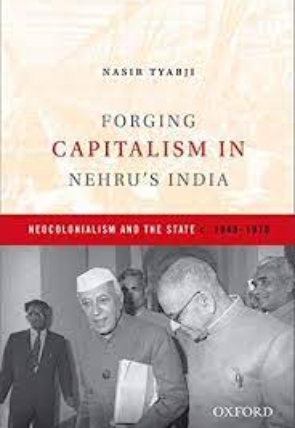
FORGING CAPITALISM IN NEHRU’S INDIA
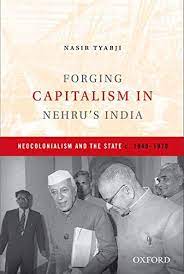
Only registered users can download this book.
Please Login/Register first.

GLIMPSES OF WORLD HISTORY

Only registered users can download this book.
Please Login/Register first.
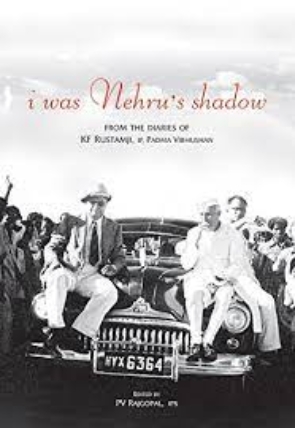
I WAS NEHRU’S SHADOW
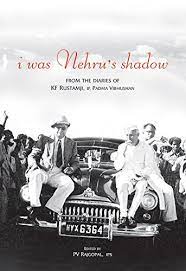
Only registered users can download this book.
Please Login/Register first.

INDIA FROM CURZON TO NEHRU AND AFTER

Only registered users can download this book.
Please Login/Register first.
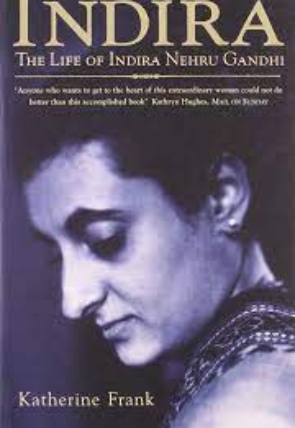
INDIRA THE LIFE OF INDIRA NEHRU GANDHI
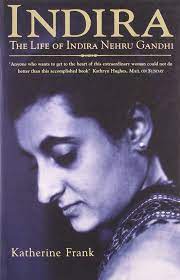
Only registered users can download this book.
Please Login/Register first.
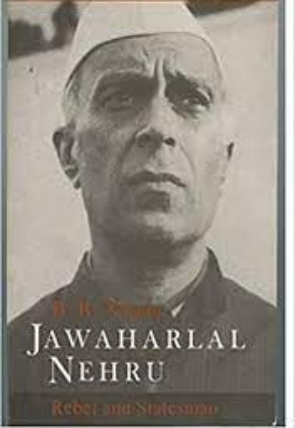
JAWAHARLAL NEHRU : REBEL AND THE STATESMAN FREE PDF BOOK
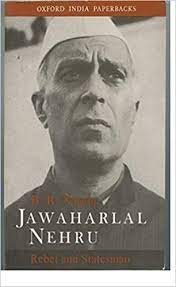
Only registered users can download this book.
Please Login/Register first.
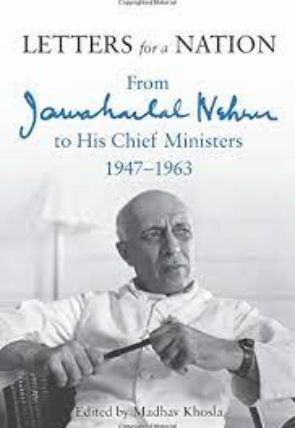
LETTERS FOR A NATION FROM JAWAHRLAL NEHRU TO HIS CHIEFMINISTERS FREE PDF BOOK
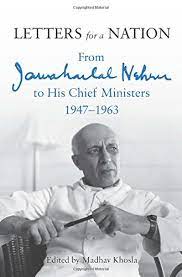
Only registered users can download this book.
Please Login/Register first.

NEHRU ROUTLEDGE HISTORICAL BIOGRAPHIES FREE PDF BOOK

Only registered users can download this book.
Please Login/Register first.
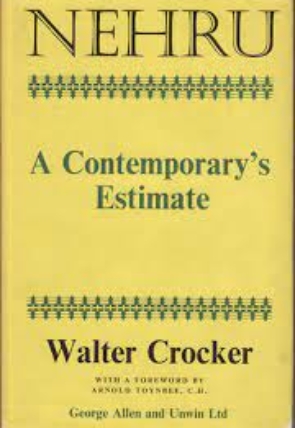
NEHRU A CONTEMPORARY’S ESTIMATE FREE PDF BOOK
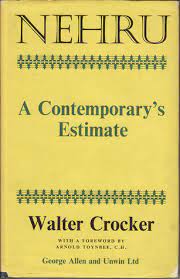
Only registered users can download this book.
Please Login/Register first.
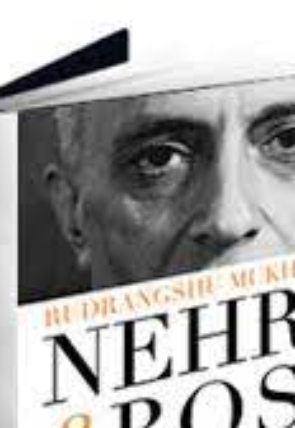
NEHRU AND BOSE PARALLEL LIVES FREE PDF BOOK
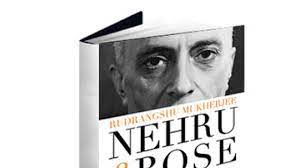
Only registered users can download this book.
Please Login/Register first.
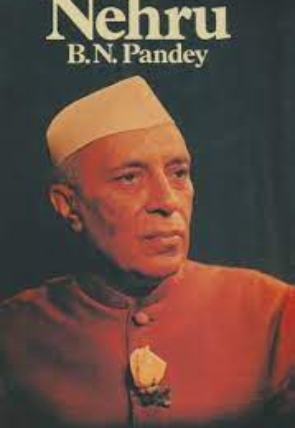
NEHRU BY BN PANDEY FREE PDF BOOK
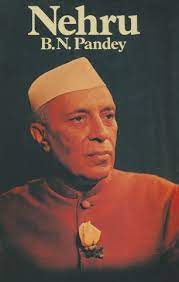
Only registered users can download this book.
Please Login/Register first.
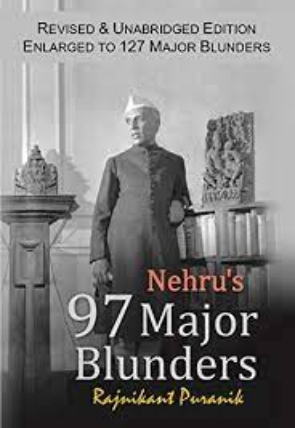
NEHRUS 97 MAJOR BLUNDERS FREE PDF BOOK

Only registered users can download this book.
Please Login/Register first.
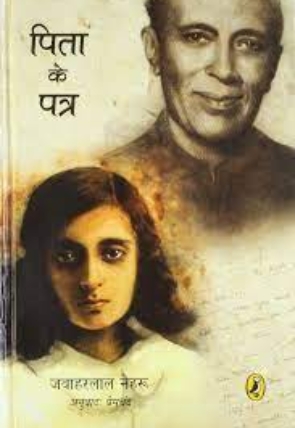
PITA KE PATRA FREE PDF BOOK
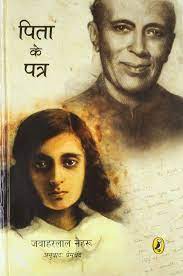
Only registered users can download this book.
Please Login/Register first.
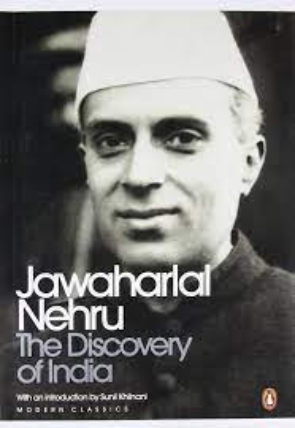
THE DISCOVERY OF INDIA FREE BOOK PDF

Only registered users can download this book.
Please Login/Register first.